Best Linux Distributions for Older Computers
Hello!
In short: don't throw your old computer yet - use a lightweight Linux distribution to revive it!
What are you doing with your old computer? The one that once had a good hardware configuration, but is now considered obsolete. Why not restore it with Linux? I'm going to list the best lightweight Linux distributions that you can use on your old PC.
')
I will try to sort the list in descending order of equipment requirements. This means that the lightweight Linux distribution, which occupies the first place, will require minimal hardware.
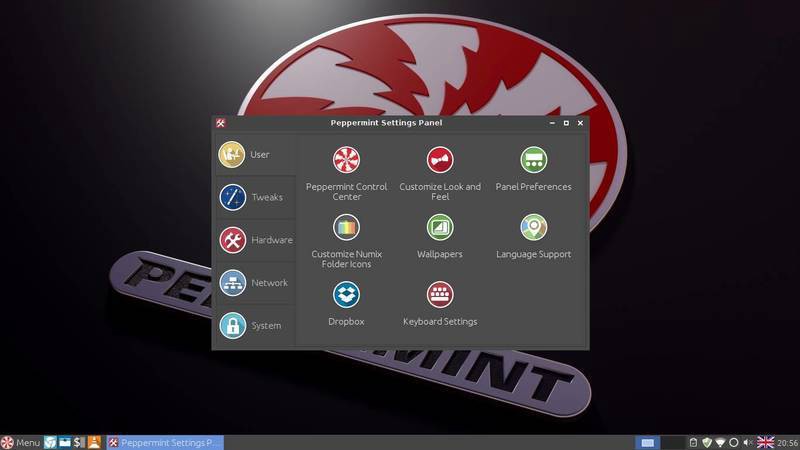
Peppermint is a cloud-based Linux distribution that does not require powerful hardware to run. It is based on Lubuntu and uses the LXDE desktop environment for smoother operation.
Peppermint OS comes with ICE , an application for integrating any website as a desktop application.
Minimum system requirements for Peppermint OS:
RAM: 1 GB of RAM (2 GB recommended)
CPU: Processor based on Intel x86 architecture
Hard disk space: At least 4 GB of free disk space
You can download the distribution here.

The next distribution on our list is Lubuntu. As the name implies, Lubuntu is based on Ubuntu, but uses LXDE as the desktop environment . Lubuntu is the most lightweight, Ubuntu-derived Linux distribution, so it specializes in speed and support for older devices.
By default, much less applications are supplied with this distribution than with Ubuntu, and they consist mostly of system-undemanding programs.
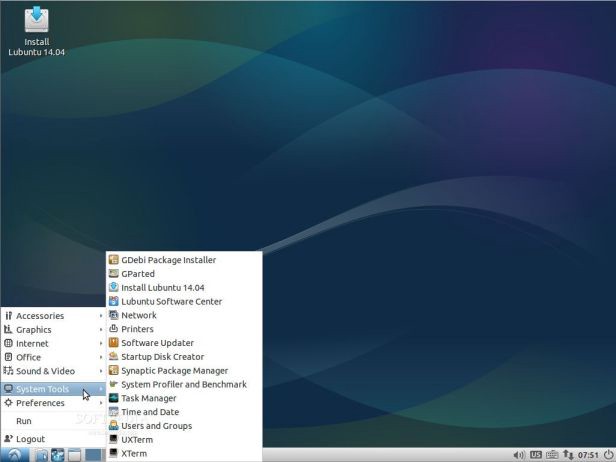
GPicView for image viewing, MTPaint for drawing, Evince for PDF files, Audacious for music, Gnome-Player for video, guvcview for webcam, Chromium as web browser, Sylpheed for email, Pidgin for instant messages, Transmission as BitTorrent client, Gnumeric for spreadsheets, Abiword as an alternative to Microsoft Word, Xpad for notes, etc.
If you have previously used Ubuntu, Lubuntu does not seem unfamiliar to you. Their software and repositories are the same, so you can install on Lubuntu all the software that you used once on Ubuntu. But do not forget about your system when installing the necessary applications. Do not use resource-intensive applications.
Minimum system requirements for Lubuntu:
RAM: 512 MB of RAM (1 GB recommended)
CPU: Pentium 4 or Pentium M, or AMD K8, or higher
You can download the distribution here.

As the name implies, Linux Lite (“lightweight”) is a lightweight Linux distribution that does not require high-performance hardware to work. Linux Lite is based on Ubuntu LTS (Long Term Support) releases. LTS provides support for the distribution for 5 years, that is, after installing Linux Lite on a computer, updates will be released all 5 years, without fail.
The Linux Lite development team says: “Linux Lite is fully ready for use out of the box - this means that you will not have to install additional software when you first launch the distribution.” This is very good news for newbies, because they do not have to spend time searching and installing the necessary applications. Most mainstream applications are already built into the OS.
Here are just a few of the pre-installed applications: Firefox as a web browser, Thunderbird for email, Dropbox as cloud storage, VLC Media Player for music, LibreOffice as an alternative to Microsoft Office, Gimp for image editing and Lite tweaks for customizing the desktop.
Given that this distribution is based on Ubuntu, on the Internet you can find a lot of tutorials, tips, subject forums, and the like, if you encounter any difficulties.
Minimum system requirements for Linux Lite:
RAM: 512 MB of RAM (1 GB recommended)
CPU: 700 MHz processor
Monitor: VGA screen, resolution 1024 × 768 (VGA, DVI or HDMI screen recommended, resolution 1366 × 768)
Hard disk space: At least 5 GB of free disk space
You can download the distribution here.
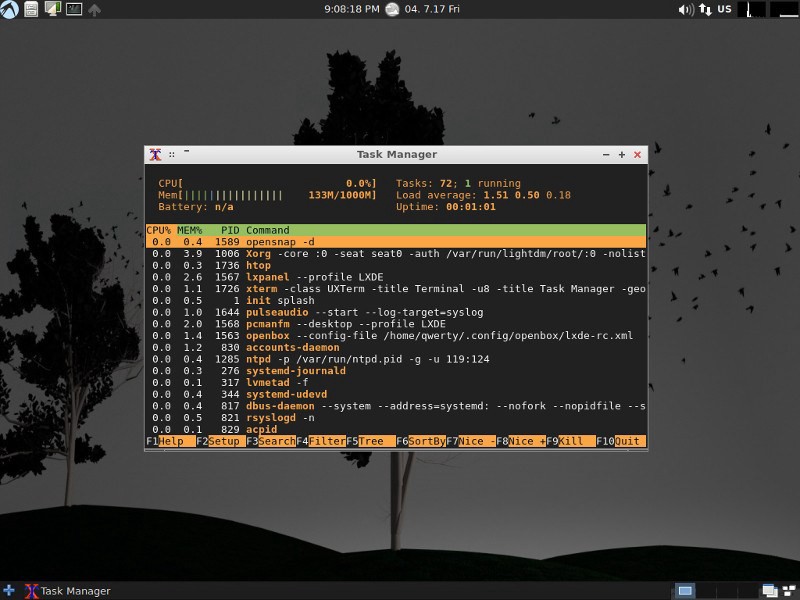
LXLE is a Linux distribution based on the latest version of Lubuntu LTS. Uses LXDE GUI.
Despite the fact that LXLE is an easy distribution, it tries to provide an intuitive and beautiful UI (user interface). The system is perfectly optimized and has good performance, comes with a wide range of lightweight applications, pre-installed by default.
Minimum system requirements for LXLE:
RAM: 512 MB (1 GB recommended)
CPU: Pentium 3 (Pentium 4 recommended)
Hard disk space: 8 GB
You can download the distribution here.
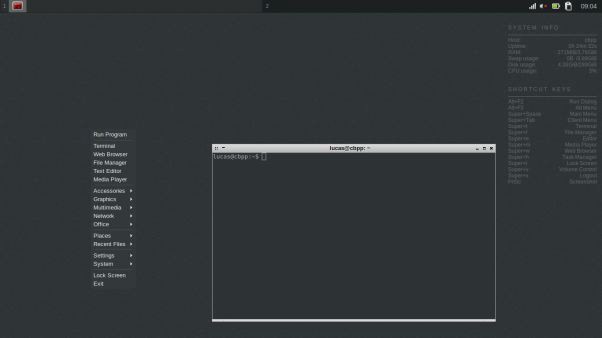
CrunchBang ++ is also known as CBPP or #! ++ or CrunchBang Plus Plus. CrunchBang ++ is a clone of a dead distribution called CrunchBang Linux, known for its simplicity and light weight. CrunchBang ++ supports old hardware and works without any problems. It is based on Debian 9 and uses a minimalistic interface design. It is also based on the Openbox window manager.
This project continues the same goal as CrunchBang Linux: to provide users with an easy-to-use and easy distribution of Linux, with good functionality. That is why Crunchbang ++ includes a minimal design, a simple and elegant interface.
Some of the standard applications: Geany IDE, Terminator terminal emulator, Thunar file manager, Gimp for image editing, Viewnior for viewing images, VLC Media Player for music, Xfburn for recording CD / DVDs, Iceweasel as a browser, Transmission as BitTorrent client, Gnumeric for spreadsheets, Evince for PDF files, gFTP - file transfer client, Xchat - IRC client, AbiWord as an alternative to Microsoft Word.
Minimum system requirements for CrunchBang ++:
There are no official system requirements for CrunchBang ++. Ideally, it should work with 512 MB of RAM and a Pentium 4 processor (CPU).
Openbox is not really suitable for beginners, but this does not mean that you should be afraid to try it.
You can download the distribution here.

Another easy Linux distribution that brings new life to old computers is Bodhi Linux. Bodhi Linux is primarily known for its ease. Bodhi Linux doesn’t have a lot of software pre-installed, so the output is an ISO file that is small. But, in which case, you can install any application you need using apt. On older computers, it works fine, consuming a small amount of memory.
In addition, the window manager Enlightenment makes the distribution even faster. Enlightenment is faster than other window managers. If you have any problems using Enlightenment or some other Bodhi function, you can read the guides written by the development team.
Bodhi Linux has basic applications, such as Ephoto for graphics, Midori as a web browser, ePad text editor, but unfortunately there are no multimedia applications. But do not worry! As I said, you can install other applications via apt. Repositories destined for Ubuntu are also available on Bodhi Linux.
Minimum system requirements for Bodhi Linux:
RAM: 256 MB of RAM
CPU: 1.0 GHz
Hard disk space: 4 GB of free disk space
You can download the distribution here.

antiX is a lightweight Linux distribution based on Debian. It is famous for the fact that the systemd is not used in the system. If you are not familiar with the term “systemd”, then you should not care that antiX does not use “systemd”.
Instead of the usual graphical desktop environment, antiX uses icewm's window manager so that the system can work without problems even on the weakest hardware. antiX can be used as a fast LiveCD / LiveUSB system to repair your computer.
Minimum system requirements for antiX Linux:
RAM: 256 MB of RAM
CPU: PIII processors
Hard disk space: 2.7 GB of free disk space
You can download the distribution here.

The third place in our list is SparkyLinux. SparkyLinux is another lightweight Linux distribution that, in addition to old computers, is aimed at modern hardware. That is why this distribution has two versions, one of which comes with all the necessary installed tools, codecs, plug-ins, etc., so that the system is ready to work when you first start.
SparkyLinux is based on Debian and has several options for the graphical desktop environment, including LXDE, OpenBox / JWM, e17, MATE, LXQt, Cli, and GameOver edition. LXQt is much faster than other environments mentioned above, except Cli (Command Line Interface).
Minimum system requirements for SparkyLinux:
RAM: 256 MB of RAM for LXDE, e17, Openbox, GameOver and 384 MB of RAM for MATE, LXQt
CPU: i486 / amd64
Hard disk space: 5 GB of free disk space
You can download the distribution here.
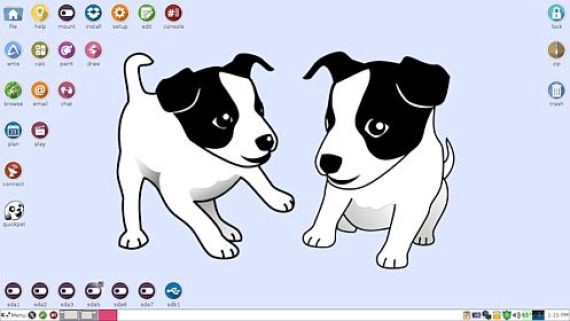
The latest release of Puppy Linux is Puppy Linux 6.0.2 Tahrpup CE, which is only 199–201 MB in size (!). This distribution can be downloaded from a USB drive of a very small size.
Puppy Linux can be booted from a Live CD / DVD / USB, and after booting you can eject the CD / DVD / USB and Puppy Linux will still work without crashing. Puppy loads and runs from RAM, which makes it extremely fast. Among other things, you can save any data on the same USB from which you download Puppy Linux.
By default, Puppy Linux uses JWM and Openbox window managers, which significantly reduces resource consumption. Puppy Linux contains a set of basic applications only. For example, Gnumeric for spreadsheets, Abiword as an alternative to Microsoft Word and various graphics editing and media playback programs.
Minimum system requirements for Puppy Linux:
RAM: 64 MB (256 MB recommended)
CPU: 333 MHz
You can download the distribution here.

Get ready to experience the excitement of Tiny Core. I bet even the smallest image editing application on Windows will be harder than Tiny Core Linux. Yes, its weight is only 16 MB (!!). Downloading a small, low-quality video takes more time than downloading Tiny Core Linux.
The system comes only with the most necessary programs and a minimalist interface. If you have a very old computer, install Tiny Core and get to know this little miracle. It loads faster than any other known OS.
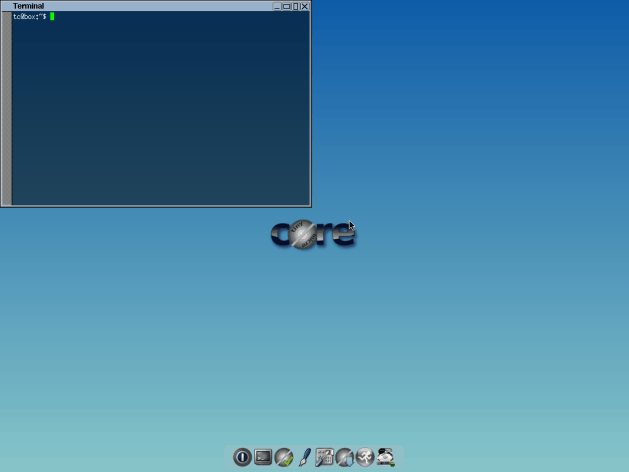
Tiny Core Linux is based on the Damn Small distribution, but at the moment it is completely independent. By default, Tiny Core comes with FLTK / FKWM and BusyBox GUI. Many things you will miss, but do not worry if you want, you can install all this manually.
There are three versions of Tiny Core: Core, Tiny Core and CorePlus. The first version contains only CLI (Command Line Interface) and only experienced / advanced users will be able to work with it. The current version of Core weighs only 9 MB.
Tiny Core is designed for the average user who is familiar with the GUI (Graphical User Interface). The current version of TinyCore is 16 MB.
Core Plus is an installation image, not a distribution. It is recommended for new users who have access only to the wireless network or those who use a non-English keyboard layout. The distribution includes a basic Core System with utilities to configure the system: a choice of 7 window managers, support for wireless communication through many firmware files and ndlswrapper, support for non-English layouts, and a tool for remastering. The size of the current CorePlus version is only 72 MB.
Minimum system requirements for Tiny Core Linux:
RAM: 46 MB (64 MB recommended)
CPU: Pentium 2
You can download the distribution here.
This is where our short selection came to an end, I hope you have found something new for yourself. More similar articles can be read in the Neuron telegram channel (@neurondata)
All knowledge!
In short: don't throw your old computer yet - use a lightweight Linux distribution to revive it!
What are you doing with your old computer? The one that once had a good hardware configuration, but is now considered obsolete. Why not restore it with Linux? I'm going to list the best lightweight Linux distributions that you can use on your old PC.
')
The best lightweight Linux distributions for older laptops and desktops
I will try to sort the list in descending order of equipment requirements. This means that the lightweight Linux distribution, which occupies the first place, will require minimal hardware.
10. Peppermint

Peppermint is a cloud-based Linux distribution that does not require powerful hardware to run. It is based on Lubuntu and uses the LXDE desktop environment for smoother operation.
Peppermint OS comes with ICE , an application for integrating any website as a desktop application.
Minimum system requirements for Peppermint OS:
RAM: 1 GB of RAM (2 GB recommended)
CPU: Processor based on Intel x86 architecture
Hard disk space: At least 4 GB of free disk space
You can download the distribution here.
9. Lubuntu

The next distribution on our list is Lubuntu. As the name implies, Lubuntu is based on Ubuntu, but uses LXDE as the desktop environment . Lubuntu is the most lightweight, Ubuntu-derived Linux distribution, so it specializes in speed and support for older devices.
By default, much less applications are supplied with this distribution than with Ubuntu, and they consist mostly of system-undemanding programs.

GPicView for image viewing, MTPaint for drawing, Evince for PDF files, Audacious for music, Gnome-Player for video, guvcview for webcam, Chromium as web browser, Sylpheed for email, Pidgin for instant messages, Transmission as BitTorrent client, Gnumeric for spreadsheets, Abiword as an alternative to Microsoft Word, Xpad for notes, etc.
If you have previously used Ubuntu, Lubuntu does not seem unfamiliar to you. Their software and repositories are the same, so you can install on Lubuntu all the software that you used once on Ubuntu. But do not forget about your system when installing the necessary applications. Do not use resource-intensive applications.
Minimum system requirements for Lubuntu:
RAM: 512 MB of RAM (1 GB recommended)
CPU: Pentium 4 or Pentium M, or AMD K8, or higher
You can download the distribution here.
8. Linux Lite

As the name implies, Linux Lite (“lightweight”) is a lightweight Linux distribution that does not require high-performance hardware to work. Linux Lite is based on Ubuntu LTS (Long Term Support) releases. LTS provides support for the distribution for 5 years, that is, after installing Linux Lite on a computer, updates will be released all 5 years, without fail.
The Linux Lite development team says: “Linux Lite is fully ready for use out of the box - this means that you will not have to install additional software when you first launch the distribution.” This is very good news for newbies, because they do not have to spend time searching and installing the necessary applications. Most mainstream applications are already built into the OS.
Here are just a few of the pre-installed applications: Firefox as a web browser, Thunderbird for email, Dropbox as cloud storage, VLC Media Player for music, LibreOffice as an alternative to Microsoft Office, Gimp for image editing and Lite tweaks for customizing the desktop.
Given that this distribution is based on Ubuntu, on the Internet you can find a lot of tutorials, tips, subject forums, and the like, if you encounter any difficulties.
Minimum system requirements for Linux Lite:
RAM: 512 MB of RAM (1 GB recommended)
CPU: 700 MHz processor
Monitor: VGA screen, resolution 1024 × 768 (VGA, DVI or HDMI screen recommended, resolution 1366 × 768)
Hard disk space: At least 5 GB of free disk space
You can download the distribution here.
7. LXLE

LXLE is a Linux distribution based on the latest version of Lubuntu LTS. Uses LXDE GUI.
Despite the fact that LXLE is an easy distribution, it tries to provide an intuitive and beautiful UI (user interface). The system is perfectly optimized and has good performance, comes with a wide range of lightweight applications, pre-installed by default.
Minimum system requirements for LXLE:
RAM: 512 MB (1 GB recommended)
CPU: Pentium 3 (Pentium 4 recommended)
Hard disk space: 8 GB
You can download the distribution here.
6. CrunchBang ++

CrunchBang ++ is also known as CBPP or #! ++ or CrunchBang Plus Plus. CrunchBang ++ is a clone of a dead distribution called CrunchBang Linux, known for its simplicity and light weight. CrunchBang ++ supports old hardware and works without any problems. It is based on Debian 9 and uses a minimalistic interface design. It is also based on the Openbox window manager.
This project continues the same goal as CrunchBang Linux: to provide users with an easy-to-use and easy distribution of Linux, with good functionality. That is why Crunchbang ++ includes a minimal design, a simple and elegant interface.
Some of the standard applications: Geany IDE, Terminator terminal emulator, Thunar file manager, Gimp for image editing, Viewnior for viewing images, VLC Media Player for music, Xfburn for recording CD / DVDs, Iceweasel as a browser, Transmission as BitTorrent client, Gnumeric for spreadsheets, Evince for PDF files, gFTP - file transfer client, Xchat - IRC client, AbiWord as an alternative to Microsoft Word.
Minimum system requirements for CrunchBang ++:
There are no official system requirements for CrunchBang ++. Ideally, it should work with 512 MB of RAM and a Pentium 4 processor (CPU).
Openbox is not really suitable for beginners, but this does not mean that you should be afraid to try it.
You can download the distribution here.
5. Bodhi Linux

Another easy Linux distribution that brings new life to old computers is Bodhi Linux. Bodhi Linux is primarily known for its ease. Bodhi Linux doesn’t have a lot of software pre-installed, so the output is an ISO file that is small. But, in which case, you can install any application you need using apt. On older computers, it works fine, consuming a small amount of memory.
In addition, the window manager Enlightenment makes the distribution even faster. Enlightenment is faster than other window managers. If you have any problems using Enlightenment or some other Bodhi function, you can read the guides written by the development team.
Bodhi Linux has basic applications, such as Ephoto for graphics, Midori as a web browser, ePad text editor, but unfortunately there are no multimedia applications. But do not worry! As I said, you can install other applications via apt. Repositories destined for Ubuntu are also available on Bodhi Linux.
Minimum system requirements for Bodhi Linux:
RAM: 256 MB of RAM
CPU: 1.0 GHz
Hard disk space: 4 GB of free disk space
You can download the distribution here.
4. antiX Linux

antiX is a lightweight Linux distribution based on Debian. It is famous for the fact that the systemd is not used in the system. If you are not familiar with the term “systemd”, then you should not care that antiX does not use “systemd”.
Instead of the usual graphical desktop environment, antiX uses icewm's window manager so that the system can work without problems even on the weakest hardware. antiX can be used as a fast LiveCD / LiveUSB system to repair your computer.
Minimum system requirements for antiX Linux:
RAM: 256 MB of RAM
CPU: PIII processors
Hard disk space: 2.7 GB of free disk space
You can download the distribution here.
3. SparkyLinux

The third place in our list is SparkyLinux. SparkyLinux is another lightweight Linux distribution that, in addition to old computers, is aimed at modern hardware. That is why this distribution has two versions, one of which comes with all the necessary installed tools, codecs, plug-ins, etc., so that the system is ready to work when you first start.
SparkyLinux is based on Debian and has several options for the graphical desktop environment, including LXDE, OpenBox / JWM, e17, MATE, LXQt, Cli, and GameOver edition. LXQt is much faster than other environments mentioned above, except Cli (Command Line Interface).
Minimum system requirements for SparkyLinux:
RAM: 256 MB of RAM for LXDE, e17, Openbox, GameOver and 384 MB of RAM for MATE, LXQt
CPU: i486 / amd64
Hard disk space: 5 GB of free disk space
You can download the distribution here.
2. Puppy Linux

The latest release of Puppy Linux is Puppy Linux 6.0.2 Tahrpup CE, which is only 199–201 MB in size (!). This distribution can be downloaded from a USB drive of a very small size.
Puppy Linux can be booted from a Live CD / DVD / USB, and after booting you can eject the CD / DVD / USB and Puppy Linux will still work without crashing. Puppy loads and runs from RAM, which makes it extremely fast. Among other things, you can save any data on the same USB from which you download Puppy Linux.
By default, Puppy Linux uses JWM and Openbox window managers, which significantly reduces resource consumption. Puppy Linux contains a set of basic applications only. For example, Gnumeric for spreadsheets, Abiword as an alternative to Microsoft Word and various graphics editing and media playback programs.
Minimum system requirements for Puppy Linux:
RAM: 64 MB (256 MB recommended)
CPU: 333 MHz
You can download the distribution here.
1. Tiny Core

Get ready to experience the excitement of Tiny Core. I bet even the smallest image editing application on Windows will be harder than Tiny Core Linux. Yes, its weight is only 16 MB (!!). Downloading a small, low-quality video takes more time than downloading Tiny Core Linux.
The system comes only with the most necessary programs and a minimalist interface. If you have a very old computer, install Tiny Core and get to know this little miracle. It loads faster than any other known OS.

Tiny Core Linux is based on the Damn Small distribution, but at the moment it is completely independent. By default, Tiny Core comes with FLTK / FKWM and BusyBox GUI. Many things you will miss, but do not worry if you want, you can install all this manually.
There are three versions of Tiny Core: Core, Tiny Core and CorePlus. The first version contains only CLI (Command Line Interface) and only experienced / advanced users will be able to work with it. The current version of Core weighs only 9 MB.
Tiny Core is designed for the average user who is familiar with the GUI (Graphical User Interface). The current version of TinyCore is 16 MB.
Core Plus is an installation image, not a distribution. It is recommended for new users who have access only to the wireless network or those who use a non-English keyboard layout. The distribution includes a basic Core System with utilities to configure the system: a choice of 7 window managers, support for wireless communication through many firmware files and ndlswrapper, support for non-English layouts, and a tool for remastering. The size of the current CorePlus version is only 72 MB.
Minimum system requirements for Tiny Core Linux:
RAM: 46 MB (64 MB recommended)
CPU: Pentium 2
You can download the distribution here.
This is where our short selection came to an end, I hope you have found something new for yourself. More similar articles can be read in the Neuron telegram channel (@neurondata)
All knowledge!
Source: https://habr.com/ru/post/458088/
All Articles